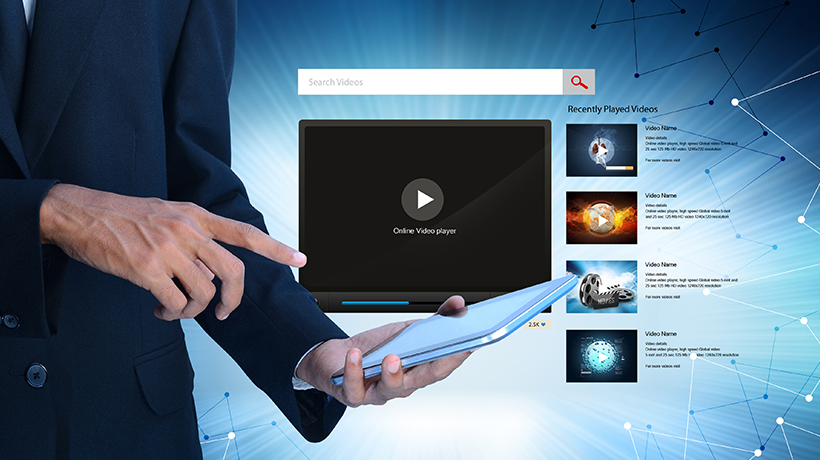
The Use Of YouTube Content In A Trackable Interactive Video Format: Case Study
We love videos as they are a great watch. Most organizations have several video-based learning nuggets on YouTube and other online repositories. Ideally, they would like their employees to be able to use these assets for learning, and they should be able to assess the effectiveness of this learning approach.
Sounds straightforward—but there is a catch!
Challenges Organizations Face When Adopting A Video-Based Learning Approach
There are 3 significant challenges that organizations face as they integrate video-based learning approach in their learning strategy:
- How do you ensure that learners retain the learning?
Videos are of high impact, but they are passive, and most of us tend to forget what we watched after 60 seconds! - Flexibility to integrate their internal video assets, as well as what may be available in public domain and offer a seamless learning path to learners.
- How can you track completion and progress?
Instead of just getting a clue if learner used a given video-based asset, organizations want to have control to track learner progress (similar to what’s possible in SCORM based eLearning courses). Additionally, they want to ascertain if they have indeed internalized the learning (through assessments that are part of standard eLearning courses).
How Can You Offset These Challenges?
Impact of video-based training is well established, and the challenge shifts to using it effectively for serious learning (to meet a specific learning outcome). This is where interactive video-based learning solutions fit.
Interactive videos can easily flip the passive watching of a video into an experience wherein the learner can have:
- Interactive and more immersive learning experience.
- Branching based on decision points (and learners’ responses).
- Feedback based on checking your knowledge checkpoints.
- Bite-sized learning.
- Flexibility to learn on the go (on the device of their choice).
- Practice.
What Are The Key Aspects Of An Interactive Video Framework?
At EI, we offer an interactive video framework with several features that make it an extremely useful tool for organizations to offer effective interactive video-based learning.
Highlights Of Our Interactive Video Framework
- Extensive range of interactions that will keep the learners engaged and create a sticky learning experience (similar to interactions in an eLearning course).
- A wide range of assessment formats that can be used to check-point the learner’s knowledge.
- SCORM output to track the learner’s progress and performance.
Key Features Of Our Interactive Video Framework
- Multi-device support.
Can run seamlessly on the device of learners’ choice ranging from desktops or laptops to tablets and smartphones. - SCORM and TinCan support.
Our framework is compatible with SCORM 1.2, 2004, AICC, and TinCan and can be hosted on LMS/LRS or run as a standalone piece on a web server. - A wide range of interactivities and knowledge checks.
We offer the interactivities that learners are used to in traditional eLearning including:- Hotspots.
- Click and reveal.
- Drop down.
- Fill in the blanks.
- Single choice assessments.
- Multiple choice assessments.
- Branching based on learner decisions (the learner can be directed to an action-for instance a “Read More” or another learning path featuring different videos).
Now, I will show you how can you use our interactive video framework. It can certainly process any video and make it interactive but its real power lies in:
- Its ability to integrate videos from YouTube and create a learning path to meet specific learning outcomes.
- The output can be tracked as it is available in SCORM/TinCan format.
Case Study
This case study showcases our ability to integrate YouTube videos into a SCORM based eLearning framework. With this feature, L&D teams can integrate customized videos assets in their learning strategy (as you can now align the video-based resources to meet your specific learning outcomes) and provide effective training material for employees.
Our Approach
We have built a solution using our interactive video framework to integrate YouTube videos into a SCORM based eLearning framework. With this approach, L&D can use these assets and convert them into effective training material for employees.
Key Features
- Visual menu.
All videos are accessible through a visual menu which now connects various assets into a learning path that shows the learning journey to the learners. - Create a customized learning path and align videos to specific learning outcomes.
The videos can be clubbed into topics to meet a specific learning outcome, and they aggregate to the required terminal learning outcomes (exactly as in traditional eLearning courses). - Interject learning interactions.
The best part of this framework is that it allows us to pause the video at any point in time and have the learners perform some activities (to explore, check-point or reinforce). We can add interactivities by pausing videos at specific cue points and bring in interactions like click to reveal content, questions in various formats, hotspots etc. - Tracking the learner progress.
Our framework allows L&D teams to track learner activity like progress, completion, scores, and so on.
I hope this article provides you with ideas on how you can integrate video-based learning to create higher impact through our interactive video-based framework. If you have any queries or need specific support, do contact me at apandey@eidesign.net.
Read More
- 5 Killer Examples Of Interactive Videos For Corporate Training
- How Can You Improve Your Corporate Training ROI Through Interactive Videos – Featuring 3 Examples
- 5 Ways To Use Interactive Videos To Supercharge Your Online Training
- Turn Passivity To Interactivity: How To Use Interactive Videos For Learner Engagement
- Free eBook: How To Use Interactive Videos For Learner Engagement And Supercharge Your Online Training



